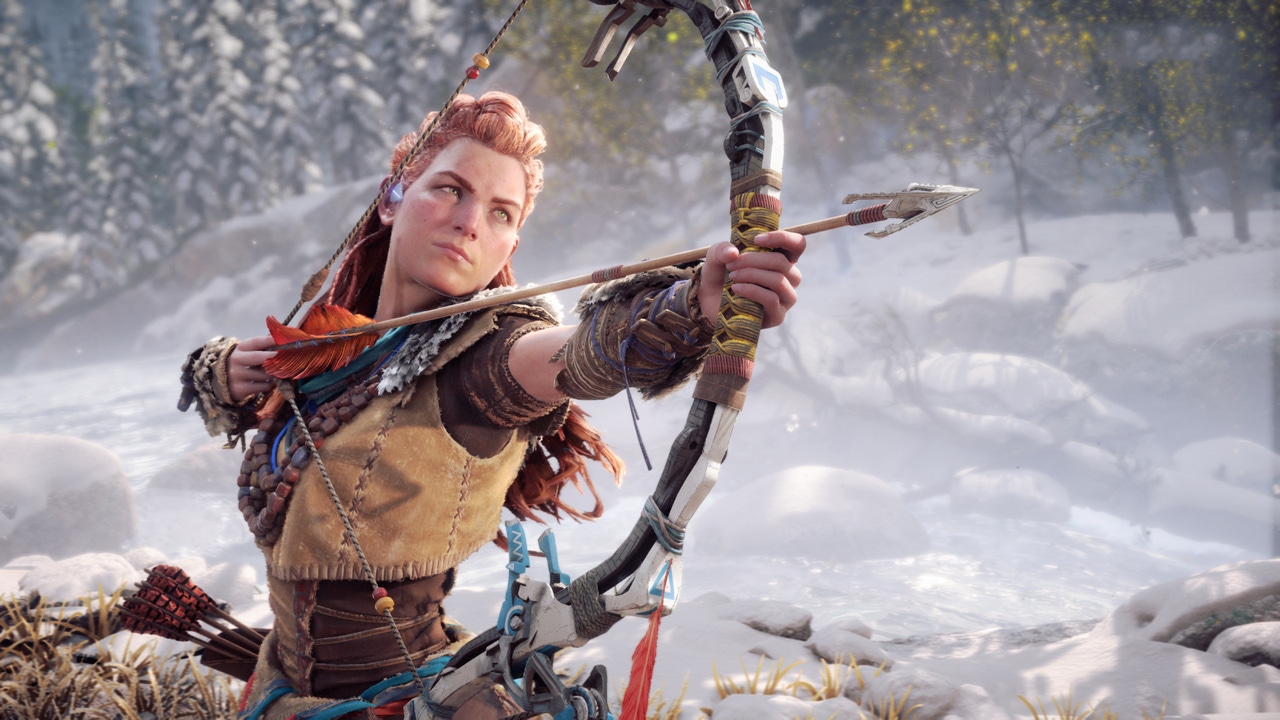Trending
Opinion: How will Project 2025 impact game developers?
The Heritage Foundation's manifesto for the possible next administration could do great harm to many, including large portions of the game development community.
.png?width=700&auto=webp&quality=80&disable=upscale)
The cinematic director for Guerrilla Games' open-world post-apocalyptic game describes their approach to adding epic flair.

At GDC 2023, the cinematic director of Horizon Forbidden West, Ismaël Auray, kicked off his panel about making the sequel's cutscenes by comparing the original game and the follow-up. The first clip from Zero Dawn showcased an action-filled escape sequence with protagonist Aloy and the morally gray Sylens, ending with the two characters conversing about the ordeal they survived. The second clip was from Forbidden West, showing a scene with Aloy interacting with three characters as they hatch a plan to enter the depths of a ruined Las Vegas.
One thing was clear after the completion of the second clip: Forbidden West saw a considerable upgrade in its cinematics, mainly how they convey tone, capture dynamic performances, and frame the storytelling. During the panel, Auray—an award-winning filmmaker who was selected among other honorees for the Short Film Corner at the 2007 Cannes Film Festival and who worked on several games—explained the different approach the sequel took, and how the global lockdowns in 2020 altered their initial plans.
"Before we get into defining these tools and having examples, I want to use the visual metaphor of a theme park," said Auray after he presented the two gameplay clips. "In a massive open-world game with cinematics, there are sometimes the main quests that will feel like a roller coaster, where it's a high-quality, exciting ride with bespoke cameras and animation."
Continuing with his metaphor, he explained that Horizon Zero Dawn was a combination of roller coasters and "spinning teacups" (the more relaxed ride), which worked for main quests and smaller events, respectively. He stated this was necessary on the original, as the first game's cinematics were produced around leveraging solid voice-over talent rather than having extensive mo-cap performances with the actors.
With this sequel, they changed this approach and focused on the actors and their specific performances, including physical and voice-over work. Auray stated they wanted to "push the boundaries and really enhance the quality" of Forbidden West's cinematics and to make it a mix of rollercoasters and "mini-roller coasters," instead of spinning teacups. With more time and resources dedicated to cinematics, Auray and the development team produced cinematics that featured more dynamic movement and expressions from the characters, starkly contrasting the original's more static and less active scenes.

Ashly Burch in action as Aloy during a motion-capture and voice-over session.
During the presentation, Auray introduced some never-before-seen videos showing early auditions and mo-cap sessions with the actors, particularly with Ashly Burch as Aloy, TJ Thyne as Morlund, and Alison Jaye as Alva. Auray explained that the enhanced budget for the game's cinematics allowed them to properly block (staging and framing a narrative) story sequences and experiment with creating more character moments, creating a more collaborative environment for the actors and creatives at Guerilla Games to refine the story.
Another benefit of the expanded scope of Forbidden West's storytelling was the expanded technical tools and ability to do "location scouting" within the game. Auray and other animators had access to the Decima engine to examine the locations for storytelling beats in-engine to devise the blocking for cinematics by using the debug mode to frame the "camera." The scene with Aloy in Las Vegas was a particular success for Auray, which went through some revisions that ultimately showcase the game's characters and storytelling in a significant way.
One major hurdle, and an all too common one heard throughout the GDC 2023 talks, was the impact COVID and the subsequent lockdowns. This resulted in the actors and creatives isolating and being away from the established production model. The developers worked around this to limit performance capture times for the actors and utilize outside vendors and local acting talent in Amsterdam (where Guerilla Games is located) to fill in gaps.

The narrative and cinematic team behind Horizon Forbidden West's "Cinematic Theme Park."
"We had a process, and we tried to protect that process as much as possible, and I think that's what helped us push through COVID; we really managed to get through that obstacle," said Auray.

Cinematic director Ismaël Auray presenting on the visual storytelling in Forbidden West.
Closing the panel out, Auray praised the development team working on the cinematics during such unusual circumstances. He finished the presentation with a short dedication to actor Lance Reddick, who passed away a week prior. The character of Sylens was one of the Horizon franchise's most unique and mysterious characters. The work done on the sequel gave Reddick's character such a nuance, quickly making him such a fan-favorite.
Read more about:
FeaturesYou May Also Like